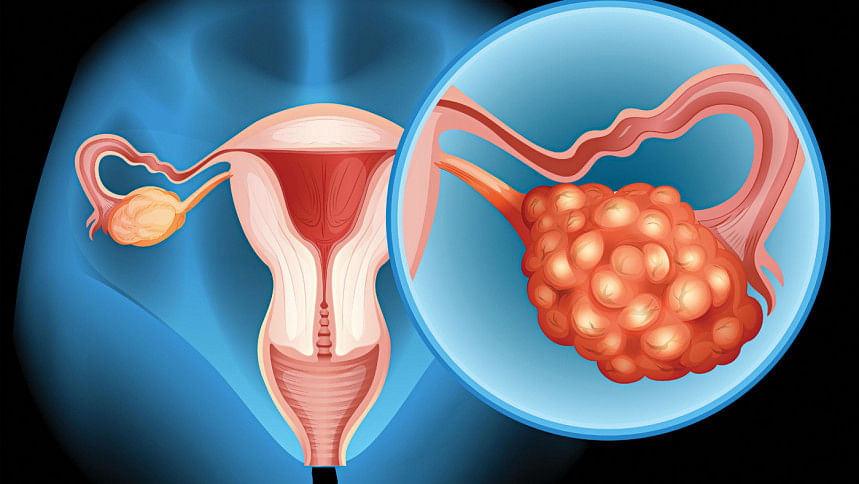‘Silent’ symptoms of ovarian cancer

The ovaries are important organs responsible for producing eggs and hormones in women. Ovarian cancer is a type of cancer that begins in the fallopian tubes and then spreads to the ovaries. Detecting ovarian cancer early is crucial for successful treatment, and recent advancements have made treatments more effective.
In the early stages of ovarian cancer, there are often no noticeable symptoms. However, as the disease progresses, certain symptoms may start to appear. These symptoms include bloating or feeling pressure in the belly, abdominal or pelvic pain, feeling full quickly during meals, and increased frequency of urination.
It is important to note that these symptoms can also be caused by non-cancerous conditions. Nevertheless, if you experience any of these symptoms persistently for more than a few weeks, it is advisable to report them to the healthcare professionals. They can help determine the cause of your symptoms and provide appropriate care.
Family history plays a role in the risk of developing ovarian cancer. Women with a close relative who has had ovarian, breast, or colon cancer are at a higher risk. Inherited genetic changes, such as BRCA1 and BRCA2 gene mutations, account for about 10% of ovarian cancers. If you have a strong family history of these cancers, it is important to consult with a doctor about potential medical follow-up.
Age is also a significant factor in ovarian cancer risk. The chances of developing ovarian cancer increase with age, particularly after menopause. Postmenopausal hormone therapy, especially the use of oestrogen without progesterone for 5 to 10 years, may also raise the risk. It remains uncertain whether the combination of oestrogen and progesterone carries the same risk.
Obesity is another factor that heightens the risk of ovarian cancer. Obese women have a higher risk compared to non-obese women. Furthermore, death rates from ovarian cancer are higher among obese women, particularly those who are severely overweight.
Diagnosing ovarian cancer involves a series of imaging tests, such as ultrasounds or CT scans, that can reveal the presence of an ovarian mass. However, these scans cannot definitively determine if the mass is cancerous. If cancer is suspected, the next step usually involves surgery to remove suspicious tissues, followed by a biopsy. The tissue sample is sent to a laboratory for further examination to confirm the presence of ovarian cancer.
Surgery is a critical component of both diagnosing ovarian cancer and determining its stage. It is also the initial treatment approach. The goal of surgery is to remove as much of the cancerous tissue as possible. The extent of surgery may involve removing one or both ovaries, along with nearby tissues and organs, depending on the stage of the cancer.
Following surgery, chemotherapy is usually administered to target any remaining cancer cells in the body. Chemotherapy drugs can be given orally, intravenously, or directly into the abdominal cavity.
Reducing the risk:
Pregnancy: Women who have biological children have a lower risk, with the risk decreasing further with each pregnancy. Breastfeeding may also provide additional protection.
Birth control pills: Long-term use of birth control pills can lower the risk of ovarian cancer. The hormonal effects of the pill, which prevent ovulation, are believed to offer some protection.
Tubal ligation and hysterectomy: Procedures like tubal ligation (getting tubes tied) or hysterectomy (uterus removal) may reduce the risk of ovarian cancer.
Low-fat diet: Although no specific diet guarantees the prevention of ovarian cancer, studies suggest that following a low-fat diet for an extended period may lower the risk. Additionally, a diet rich in vegetables may also have a protective effect, but further research is needed to establish these associations.

 For all latest news, follow The Daily Star's Google News channel.
For all latest news, follow The Daily Star's Google News channel. 



Comments